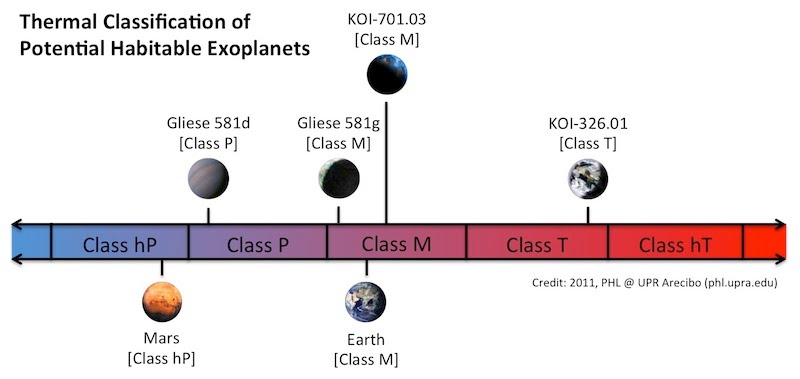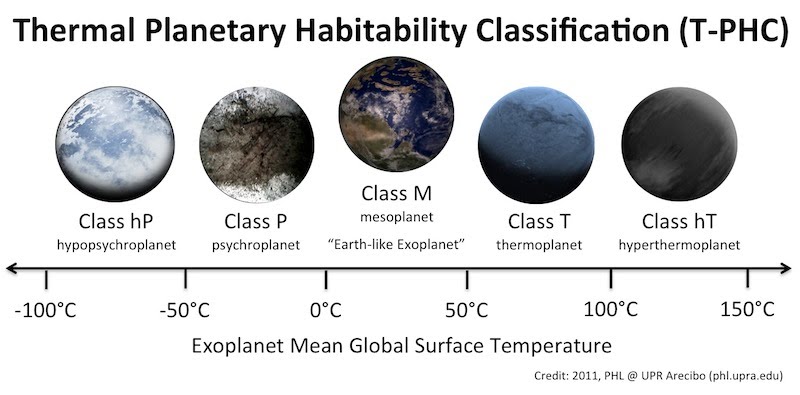It looks like you're using an Ad Blocker.
Please white-list or disable AboveTopSecret.com in your ad-blocking tool.
Thank you.
Some features of ATS will be disabled while you continue to use an ad-blocker.
share:
PhoenixOD
reply to post by JadeStar
The cost of the Mars Rover was 2.5 billion alone.
That was just a single project.
The Mars rover's main mission is not astrobiology, it is geology.
Do you know the what percentage of the Mars rover's mission -is- direct astrobiology?
You'll be shocked if you don't know.
edit on 6-12-2013 by JadeStar because: (no reason given)
edit on 6-12-2013 by JadeStar
because: (no reason given)
KellyPrettyBear
reply to post by JadeStar
You want to become a bureaucrat whose job is to lie to people on ATS?
No.
But I might consider becoming a bureaucrat whose job it is to explain to people why certain science programs are worthy of funding.
There is a gap that needs filled.
People are interested in exoplanets, life in space, potential aliens, etc but they don't know what -they- can do to help find more interesting stuff out there.
This goes all the way to the people who represent the average person in Congress (and send a budget to be approved by the President). They are clearly interested but don't know how they can help to create a bit of a 'real world star trek'.
It's simple. Money.
"No bucks, no Buck Rogers" was an old phrase.
Mars Rover Curiosity for example is interesting to people because a) its on Mars, a place pop culture has associated with life in space since the days of Percival Lowell and b) it's driving to a place that once had water.
What most people do not know is that there is no experiment on the rover to directly test for life. Originally during planning there was going to be some experiments which could have, but budgets being what they were saw them cut.
So we've not sent anything to mars since Viking 1 and Viking 2 in 1976 to directly test for life.
edit on 6-12-2013 by JadeStar because: (no
reason given)
reply to post by JadeStar
You think that politicians listen to scientists to learn more
science and do the right thing logically?
Really?
KPB
You think that politicians listen to scientists to learn more
science and do the right thing logically?
Really?
KPB
KellyPrettyBear
reply to post by JadeStar
You think that politicians listen to scientists to learn more
science and do the right thing logically?
Really?
KPB
Some actually do.
Particularly those in a district with a 'big science institution' or in districts where STEM (Science Technology Engineering Mathematics) education lags behind the national average.
If you have not watched the videos, i encourage you to do so because you can see it in their line of questioning.
There are things they can go to their constituents with that make a difference in their community. Contrary to popular belief most politicians are not evil. However plenty of them are inept. And like I said, like most of us, they geek out on the possibility of life out there as well and are very interested in those who are doing first hand studies.
The gap is to get them to move from being interested politicians, to advocates for a robust astrobiology program.
edit on 6-12-2013 by JadeStar because: (no reason given)
reply to post by JadeStar
Well you know what they call a lot of people in physics,
astrophysics, etc. ---- "Cabby!".
I'd totally salute you, if you could get into science policy
and make a difference!
KPB
Well you know what they call a lot of people in physics,
astrophysics, etc. ---- "Cabby!".
I'd totally salute you, if you could get into science policy
and make a difference!
KPB
KellyPrettyBear
reply to post by JadeStar
Well you know what they call a lot of people in physics,
astrophysics, etc. ---- "Cabby!".
I'd totally salute you, if you could get into science policy
and make a difference!
KPB
Thanks. A lot of people want me to go that way. I just wonder if I'd be up to it. I get nervous giving a presentation to peers much less what the likes of the scientists who were invited to Congress have to do.
You can hear it in Sara Seager's voice, particularly at the beginning of the video of the House session. She sounds soooo nervous. I'd be like 100 times as nervous as that.
In order to do a good job in space policy public advocacy you have to be one part Sara Seager and two parts Carl Sagan. It's a tall order.
I'd rather do differential equations all day lol.
edit on 6-12-2013 by JadeStar because: (no reason given)
edit on 6-12-2013
by JadeStar because: (no reason given)
reply to post by JadeStar
What percent people doing post doc 'ever make it' ?
In the USA it's like 30% isn't it?
It's a very rough road.
KPB
What percent people doing post doc 'ever make it' ?
In the USA it's like 30% isn't it?
It's a very rough road.
KPB
rickymouse
Why do we want to find aliens. They may come and take over all our jobs.edit on 6-12-2013 by rickymouse because: (no reason given)
Or bodies.. and houses and they'll sleep with our wives!
KellyPrettyBear
reply to post by JadeStar
What percent people doing post doc 'ever make it' ?
In the USA it's like 30% isn't it?
It varies by discipline but on average yes.
It's a very rough road.
KPB
Indeed it is. That's why I try not to get too far ahead of myself. I take my studies one day at a time and will see how far I can go with them. It's great to have goals but it's important to do the hard work necessary to reach the more immediate ones than get discouraged by the difficulty of reaching a long range goal.
reply to post by JadeStar
I'm rooting for you!
But there is a high percent chance you'll go to work for the
military industrial complex or one of it's suppliers eventually.
I'm sure you have these nasty habits called a desire for food,
shelter and the necessities of life.
I so hope you beat the odds.
KPB
I'm rooting for you!
But there is a high percent chance you'll go to work for the
military industrial complex or one of it's suppliers eventually.
I'm sure you have these nasty habits called a desire for food,
shelter and the necessities of life.
I so hope you beat the odds.
KPB
KellyPrettyBear
reply to post by JadeStar
I'm rooting for you!
But there is a high percent chance you'll go to work for the
military industrial complex or one of it's suppliers eventually.
Never. I don't want to get into personal politics but I come from a pacifist background. It's just not in my DNA to want to go down that road. I feel I'd be helping us along a road to madness.
I'm sure you have these nasty habits called a desire for food,
shelter and the necessities of life.
Well I exist on ramen noodles and what not today, I think I could manage. That said, I would rather eat ramen the rest of my life it it means one less brain ends up disappearing into that black hole.
I so hope you beat the odds.
KPB
I will do everything I can to beat them. It's like the hunger games, lol.
reply to post by JadeStar
Funny you mention that. I have heard folks like Tyson say they just wanted an extra penny on the dollar.
But for anything even remotely close- according to your star trek logic, youd first need to get massive ships off the ground (the firsts being those to construct a dock in orbit to build and launch other ships from) assuming you already knew how to for extra extended periods of time:
Maintain mechanical systems in space
Create and maintain living conditions in confined spaces
Be able to get massive ships with the above off the ground
correctly prepare the body for all of that.
Ships like the enterprise dwarfed aircraft carriers right? Even for those that didnt, imagine launching one somehow anyway. How the hell do you do that?
Im not so sure this is all about money either. In roddenburies visions, he saw humanity working together towards a common goal without it for the betterment. In order to even try, people would literally have to change their whole way of looking at life including new prejudices and fears that may arise from actually meeting other beings once we did. Service in that sort of life... Its like learning up to a masters level or phd in education at the very least, then doing community service work everyday while your basic needs are met.
How many people would do that just to meet a green goober from planet whastitcalled when people bitch about the food stamp program lol
Funny you mention that. I have heard folks like Tyson say they just wanted an extra penny on the dollar.
But for anything even remotely close- according to your star trek logic, youd first need to get massive ships off the ground (the firsts being those to construct a dock in orbit to build and launch other ships from) assuming you already knew how to for extra extended periods of time:
Maintain mechanical systems in space
Create and maintain living conditions in confined spaces
Be able to get massive ships with the above off the ground
correctly prepare the body for all of that.
Ships like the enterprise dwarfed aircraft carriers right? Even for those that didnt, imagine launching one somehow anyway. How the hell do you do that?
Im not so sure this is all about money either. In roddenburies visions, he saw humanity working together towards a common goal without it for the betterment. In order to even try, people would literally have to change their whole way of looking at life including new prejudices and fears that may arise from actually meeting other beings once we did. Service in that sort of life... Its like learning up to a masters level or phd in education at the very least, then doing community service work everyday while your basic needs are met.
How many people would do that just to meet a green goober from planet whastitcalled when people bitch about the food stamp program lol
Nephalim
reply to post by JadeStar
Funny you mention that. I have heard folks like Tyson say they just wanted an extra penny on the dollar.
Yes, an extra penny would be wonderful. I'm a little greedy so I say give us another dollar. It's less than a cup of coffee in most places these days.
FACT: If the average American tax payer spent 1% of what they do on bottled water per year on increasing the budget for astrobiology we would have the technology to get pretty good images of these earthlike worlds.
That 1% = $1 US dollar. That's it.
If you go to most people and ask if they'd like to spend an extra dollar per year in taxes to find many of the nearby planets with life and have photos of them, they'd say, "sure".
But it is almost never put across that way. And the detractors point to the "billions and billions" they perceive is already spent on that. (Which it is not.)
But for anything even remotely close- according to your star trek logic, youd first need to get massive ships off the ground
Well I used the term "star trek" loosely. I was thinking more along the lines of finding which nearby star systems are places we'd -want- to send a future starship.
That type of characterization of our local part of the galaxy is close at hand and we are right on the cusp of it. The more funding, the better the characterization.
Right now, the most optimistic scenarios have us being able to detect biomarkers in earth and superearth M-class planets in the next 10-15 years.


However, one of the things we should also be getting ready for is to be able to better image them once we know they have biomarkers.

Because as exciting as that news will be, having just a pale blue speck while it will thrill me to no end will be forgotten somewhat by the public after awhile.
Most of us would be thrilled with a picture like this:

That's doable without a ton more money at the moment. NASA has two telescopes that the NRO no longer needed to spy on us and if one were equipped with a coronagraph then we might get an image of a star system containing a superearth like the one with the large blue background above. They would appear as a tiny speck of light. (That star system pictures is of gas giants taken by a ground based telescope in Chile by the way.)
Now, imagine having a picture say like this.....

(picture of what the earth and moon would look like to "them" at the kind of resolution of the "Terrestrial Planet Mapper" that was considered as a successor to the cancelled NASA Terrestrial Planet FInder. That's an actual picture of our planet and moon from the EPOXI probe.)
Of a planet like this.... or several other worlds which we know about (the graphic below however is mostly imagination at this point):

Such pictures will be hard for the general public to forget.
Oceans, continents, clouds and weather, perhaps vegetation will be visible with a properly funded fleet of hypertelescopes in space combining their optics for a huge aperture telescope to resolve all of that.
And once we know where to potentially go, well then those worlds will beckon us.
Thus building the political will for building your starship idea.
There's even a chance we might detect something like city lights or waste heat in the infrared with a suitably large telescope or series of telescope.
But that won't come cheap. There is -no- way to get that kind of resolution in a picture of planets light years away on the cheap. We technically know how to do it. We have the technology and brain power to do it. But the money, well, think about what an aircraft carrier costs to build. That's what we're talking about here.
Is it worth it? To you and I yes. But how do you get that across to your average taxpayer?
First telescopes, then ships. That's how.
I'd say to them, "this is not a project you will see the eventual outcome of during a 4 year term, or a decade, or your lifetime but your grandkids or great great grandkids might step out on to another world and in the meantime we're all about to get a little and then a LOT smarter about what and who might be out there. Isn't that cool?"
Im not so sure this is all about money either. In roddenburies visions, he saw humanity working together towards a common goal without it for the betterment. In order to even try, people would literally have to change their whole way of looking at life including new prejudices and fears that may arise from actually meeting other beings once we did. Service in that sort of life... Its like learning up to a masters level or phd in education at the very least, then doing community service work everyday while your basic needs are met.
Right, what I mean by money really could be expressed as "resources".
A great example of this is ITER, the big fusion test reactor facility being built by several nations has these nations contributing resources which are measured in its own currency called kIUA.
An actually huge effort say, to build a starship or a fleet of them would similarly be measured not in money but resources.
Typically though, we measure resources at a lower level in terms of money in our world. In the Trek world, Earth was recovering from a near nuclear holocaust. People were already snapped out of their comfort zones and the ideas of helping each other out, putting aside hate and prejudices for survival, and then to thrive made sense.
We don't live in that post apocalyptic world. And I suspect if we did, we'd be spending even less resources to recover in any way that would lead us to Roddenbury's vision.
So, with that in mind, we could simply say, "It starts now. Let's build the next great thing of humanity by reaching out into our neighborhood. The pyramids were built in about 20 years. The Great Wall of China took about 80 years. Our real Star Trek may take 200 years but it starts today by figuring out, where among the stars we might want to go. Will you be willing to pay an extra dollar in taxes so that future generations of your family, might like previous generations, perhaps set foot on new land?"
There are people who have formed an organization which they hope will be around in 100 years for this reason. It's called the 100 Year Starship organization. They include some of the best people tackling all aspects of what it might take for humanity to take the next great leap.
100 Year Starship Official Web Site
And they were conceived in meeting near the Golden Gate bridge (sound a bit familiar?)
How many people would do that just to meet a green goober from planet whastitcalled when people bitch about the food stamp program lol
Its about shifting the paradigm from a "me" mentality to an "us" mentality. Some people think of that as socialism or whatever, but actually no one nation is going to do all this by themselves. No one company will either.
Its gonna take a planet to raise a spacefaring child.
edit on 7-12-2013 by JadeStar because: (no reason given)
Hmm, well you could try the Texas goober approach.
Do you work for nasa? (Don't you answer that) but lets say on a hypo you do..
You go sit down over there with the goobers up in congress and you say, the goobers out in Texas wanna know if nasa can take some of them there, "high resolution photos of dirt from extreme altitudes."
And when they say "We can give you a 35 dollar camera and a ladder and you can walk right outside and you can photograph all the dirt you can find, you say; that's not the dirt we wanna photograph. Begin, (insert really awesome presentation of "Class M planet" renderings in said nice presentation with sound of course) and you say this is the dirt we want high res photos of and we can do it with a few pennies.
if they say NO, which they're great at doing, then simply ask... can we take donations on our website then? If they say no again.. do what everyone else does. K? Inform them that the "global warming monster" is gonna eat their lunch, storm in their homes and kick their lamps over. rofl
Then yell "Do it for THE LAMPS ALL OVER THE WORLD in jesus name-UH!!11!! jalepeno glory to peppers"
Or you guys can just go ask politely for options in fundraising if no money is available for allocation
Do you work for nasa? (Don't you answer that) but lets say on a hypo you do..
You go sit down over there with the goobers up in congress and you say, the goobers out in Texas wanna know if nasa can take some of them there, "high resolution photos of dirt from extreme altitudes."
And when they say "We can give you a 35 dollar camera and a ladder and you can walk right outside and you can photograph all the dirt you can find, you say; that's not the dirt we wanna photograph. Begin, (insert really awesome presentation of "Class M planet" renderings in said nice presentation with sound of course) and you say this is the dirt we want high res photos of and we can do it with a few pennies.
if they say NO, which they're great at doing, then simply ask... can we take donations on our website then? If they say no again.. do what everyone else does. K? Inform them that the "global warming monster" is gonna eat their lunch, storm in their homes and kick their lamps over. rofl
Then yell "Do it for THE LAMPS ALL OVER THE WORLD in jesus name-UH!!11!! jalepeno glory to peppers"
Or you guys can just go ask politely for options in fundraising if no money is available for allocation
edit on 7-12-2013 by Nephalim because: (no reason given)
new topics
-
SCOTUS Chief Justice JOHN ROBERTS Ends 2024 Describing His Fears for Safety of U.S. Judges.
Above Politics: 4 hours ago -
How we've changed in 100 years
Ancient & Lost Civilizations: 11 hours ago
top topics
-
I dont understand what i just witnessed
Social Issues and Civil Unrest: 15 hours ago, 12 flags -
US disburses $3.4 billion in budget aid for Ukraine, Yellen says
US Political Madness: 12 hours ago, 11 flags -
How we've changed in 100 years
Ancient & Lost Civilizations: 11 hours ago, 8 flags -
Nigel Farage's New Year Message.
Politicians & People: 14 hours ago, 6 flags -
SCOTUS Chief Justice JOHN ROBERTS Ends 2024 Describing His Fears for Safety of U.S. Judges.
Above Politics: 4 hours ago, 3 flags
active topics
-
SCOTUS Chief Justice JOHN ROBERTS Ends 2024 Describing His Fears for Safety of U.S. Judges.
Above Politics • 8 • : WeMustCare -
I dont understand what i just witnessed
Social Issues and Civil Unrest • 19 • : Myhandle -
Simulation theory and have we reset before like a game?
Conspiracies in Religions • 38 • : G1111B1234 -
Get Ready - Here comes the Bird Flu Pandemic - Millions are Notified
Diseases and Pandemics • 56 • : rickymouse -
Reflections of Elections past
US Political Madness • 12 • : mysterioustranger -
-@TH3WH17ERABB17- -Q- ---TIME TO SHOW THE WORLD--- -Part- --44--
Dissecting Disinformation • 3872 • : duncanagain -
Strange fog all over the northern hemisphere
General Conspiracies • 37 • : annonentity -
The C.D.C. Says There Was NO INFLUENZA Worth Reporting for the 2020-2021 Flu Season.
Diseases and Pandemics • 56 • : KrustyKrab -
US disburses $3.4 billion in budget aid for Ukraine, Yellen says
US Political Madness • 18 • : Lazy88 -
House republicans prove to be drama queens
US Political Madness • 6 • : rickymouse
